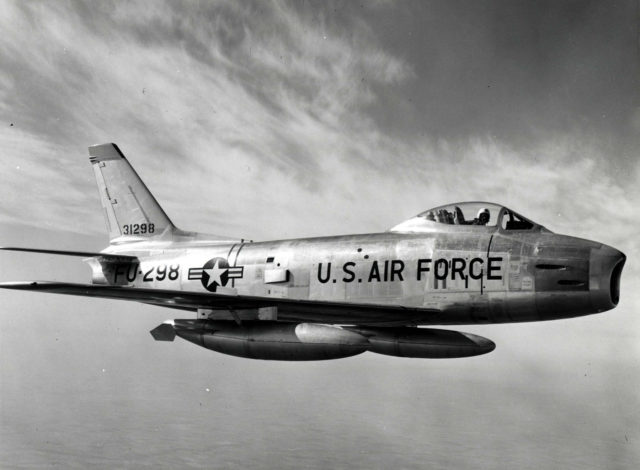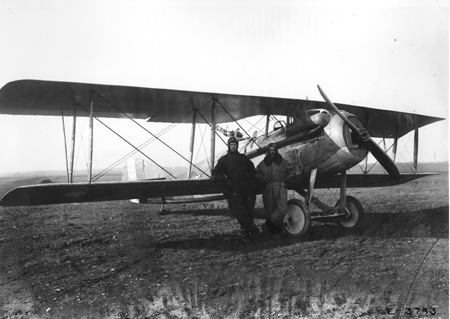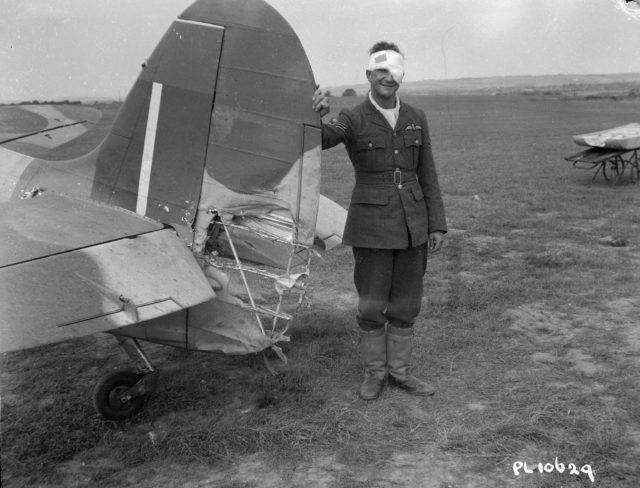Aviation is a relative newcomer to the field of battle. Though balloons would begin seeing significant use as aerial recon platforms in the 1860s, the first use of air power as we think of it would not begin until World War I, a mere 100 years ago. Since then a number of battles have taken place that would shake the heavens, alter the course of wars, and change how we viewed the sky.
10. Black Friday
On the morning of February 9, 1945, British Royal Air Force aircraft spotted a number of ships in and around Førde Fjord, Norway. Most of the ships were German cargo ships, filled with raw materials vital for the struggling German war industry. One, however, was a German destroyer, the Z33. In accordance with Costal Command orders, a force of approximately 45 British Beaufighters and Mustangs swooped down on the Z33, ignoring the cargo ships.
In the air over the fjord, 12 Fw 190s came to the defense of the Z33. By the end of the day the Germans had lost four planes, while the British had lost 10 — almost a quarter of their force. Their target was damaged, but would survive. After the loss of so many aircraft and pilots for little gain, Coastal Command changed its standing orders. Cargo vessels were prioritized over warships for the remainder of the war.
9. Black Tuesday
Russia maintains to this day that it never sent any of its aircraft into Korea during the Korean War. In spite of this, the air over “MiG Alley” was full of MiG-15s being flown by Russians. One, First Lieutenant Semyon Jominich, is credited as having scored history’s first jet-on-jet shoot down.
Black Tuesday was a particularly bloody day for American pilots in Korea. On that day the United States put 106 aging B-29s in the air on a daylight mission to bomb targets in North Korea. Escorting them were 30 F-84 Thunderjets. In response, the Russians launched 30 MiGs. The Soviets outperformed their American opponents, shooting down 10 B-29s and four Thunderjets. Six more aircraft returned to base too badly damaged to be repaired. Only two Russian planes were damaged, and only one pilot was injured. Both Soviet planes and the pilot would all return to combat quickly. In the wake of this disaster, American bombing raids were halted for three months.
8. El Mansoura
Israel’s military is often viewed as a scrappy underdog winning battles it should lose. The air battle over El Mansoura would damage that reputation. In October 1973, a coalition of Arab states led by Egypt and Syria launched a surprise attack on Israel.
On October 14, the Israeli Air Force launched 160 aircraft in an attempt to cripple the Egyptian Air Force. Their targets were the Egyptian airbases of Tanta and El Mansoura. Their goal was to bomb the runways, rendering the Egyptians incapable of taking off. Egyptian radar detected Israel’s F-4 and A-4 aircraft, and 62 Egyptian MiG-21s scrambled to counterattack. Led by future president Hosni Mubarak, the MiGs darted toward the formation of Israeli fighters.
Israel’s heavy bombs proved to be a significant liability in the ensuing dogfight. To regain the maneuverability and speed needed to compete with the MiGs, the Israeli pilots were forced to jettison their bombs. 17 Israeli fighters were shot down during the 53 minute dogfight. Egypt only had three of their own aircraft shot down, although another three ran out of fuel and crashed after the battle. Not one of Israel’s objectives were achieved.
7. The Bekaa Valley Turkey Shoot
On June 6, 1982, Israel invaded Lebanon to establish a defense zone against the Lebanon based Palestine Liberation Organization. Their advance stalled on the 7th, blocked by a Lebanese division in Ein Zahalta. To regain momentum Israel needed to launch air strikes, but they risked high casualties due to the presence of Syrian surface-to-air (SAM) missiles in the Bekaa Valley.
To counter the SAM batteries, Israel tricked the Syrians into revealing their positions by using drones as decoy targets. With the batteries located, F-15 and F-16 fighters began swooping in to pick them off. In response, Syrian commanders scrambled over 100 Mig-23s and Su-20s to stop the attack. Though outnumbered, Israel successfully jammed Syrian radio communication while maintaining its own radio network. This let Israel successfully coordinate their response to the Syrian fighters.
By the end of the two and a half hour operation, 29 Syrian fighters had been shot down and only two SAM batteries were still in operation. Israel had not lost a single plane. With Bekaa Valley neutralized, the Israeli Air Force savaged Lebanese forces in Ein Zahalta. Lebanon and Syria would agree to a ceasefire by 6:00 AM on June 10. Israel would retain its buffer zone until 2000.
6. The Battle of Saint-Mihiel
The United States wasn’t ready for war when it joined World War I in April, 1917. By 1918, however, America was more than prepared. U.S. General John Pershing insisted that America be given command over a portion of the front line. What he got was the Saint-Mihiel salient, a triangle of German held territory driven deep into Allied lines. Four previous attempts to eliminate the salient had failed, with terrible loss of life. Pershing immediately rose to the challenge. As part of his planning, he gave command of the entire American Army Air Force in Europe to a young Signal Corp Colonel named Billy Mitchell.
When the Americans began their offensive against the salient on September 12, Mitchell flung almost 1,500 aircraft into action. His targets had been specifically selected through coordinated planning with the infantry and tank divisions. This “combined arms” approach overwhelmed the German defenders in the air and on the ground. A salient that had stood for four years fell in two days, and the war ended in two months. Combined arms tactics are used to this day.
5.The Dieppe Raid
On August 19, 1942, 6,000 mostly Canadian troops landed at the French port of Dieppe. Their objective was to seize the port, destroy the coastal defenses, gather intelligence on the Germans and render the port inoperable.
The British Royal Air Force put over 1,000 aircraft in the air. While some of the force were bombers intended to soften the defenses for the landings, most were fighters. They were there specifically to destroy Germany’s air force, the Luftwaffe. Germany responded with only 200 Fw 190 fighters and Dornier Do 217 bombers. Despite facing five to one odds, the Luftwaffe downed nearly 10 percent of the British aircraft while losing only 23 fighters. 25 Luftwaffe bombers were also lost. The attacking Canadians would lose nearly 68% of their troops, the British Navy lost a destroyer, and the mission was considered an utter failure.
4. The Great Marianas Turkey Shoot
The Battle of the Philippine Sea is the largest carrier battle in history, eclipsing even the Battle of Midway. Hoping to halt American advances in the Pacific by crippling the American carrier fleet, Japan assembled 11 carriers with around 450 aircraft to supplement approximately 300 land-based aircraft in the Mariana Islands. Facing off against them would be 15 American carriers with more than 950 aircraft. Those carriers were there to provide air support for American efforts to capture Saipan from the Japanese.
Though slightly outnumbered, in theory the Japanese should have had a significant advantage. The American carriers were tied down defending the beachheads at Saipan, while the Japanese could strike when and where they wished. Unfortunately for Japanese ambitions, significant losses among their experienced pilots at Midway and the Coral Sea had robbed them of critical skills. When the two sides met on the 19th, American pilots were able to score five kills for every one the Japanese accomplished. The Japanese fleet was forced to withdraw with the loss of three carriers and 85% of its air strength, and they would never recover from the defeat.
3. The Battle of Kursk
The Battle of Kursk is often called the greatest battle in history. Around 3,000,000 people were involved. In a battle built on such a prodigious scale, one would rightly expect the associated air battle to be similarly grandiose. Nearly 5,000 aircraft took to the skies.
In 1943, Germany launched an attack on the Soviet city of Kursk with two to one odds against them in terms of sheer power. However, they had supreme confidence in the ability of their equipment and tactics as a force multiplier. Germany’s Bf 109 was capable of flying circles around the much less maneuverable Soviet Yak-1, and had significantly more firepower.
The Russians lost almost 2,500 planes, while the Germans lost fewer than 800. However, the Russians could easily afford to replace both aircraft and pilots, while the Germans were hard put to make up their losses. Russian air superiority allowed the Soviets to take the offensive and keep it for the remainder of the war. While a relatively unknown battle in the West, Kursk was one of World War II’s most significant turning points, as Germany never again seriously threatened to advance on the Eastern Front.
2. The Battle of Britain
Technically a series of battles and skirmishes, the aerial fighting over the United Kingdom and the English Channel is traditionally viewed as one long, extended battle. Germany wanted to bomb England into submission or gain air superiority in advance of a German invasion. To this end, they hurled over 2,500 aircraft at the embattled island, in the first major battle in history to be fought exclusively by aircraft and anti-air forces.
England had fewer than 2,000 aircraft. The Germans were able to attack when and where they liked, while British pilots remained at constant alert for three and a half months. These conditions would break most fighting forces, and by October 31, 1940, Britain had lost nearly 80% of its available aircraft. But the Germans were unable to capitalize on this unprecedented destruction — Luftwaffe losses had come out to nearly 75%. The remaining number of aircraft were insufficient to provide cover for an invasion, the British people remained defiant, and the Nazi war machine had been struck its first significant defeat.
1. The Air Battle Over Nis
In spite of Korea, Vietnam or any other number of incidents during the Cold War, there’s only one time in history that both the United States and the Soviet Union admit to having fought one another in the skies. Horribly, it was a case of friendly fire. Curiously, we know almost nothing about it.
On November 7, 1944, an unknown number of U.S. P-38 Lightnings took off on a mission to attack German ground troops near Kosovo. Upon spotting a column of vehicles and marching troops, the Lightnings attacked. Unfortunately, the troops on the ground were Russian. The Lightnings were 250 miles off course in Serbia. Soviet commanders rushed Yak-3 fighters from Nis into the air to protect their soldiers. The two sides collided, aircraft were downed and both sides turned back to base with diminished numbers.
Everyone was sworn to secrecy after the incident. The United States apologized. Investigations were buried, leaving many unanswered questions. How did American fighters end up attacking Russian troops? How many planes were involved? How many were lost? It remains a mystery to this day, and we may never know.



